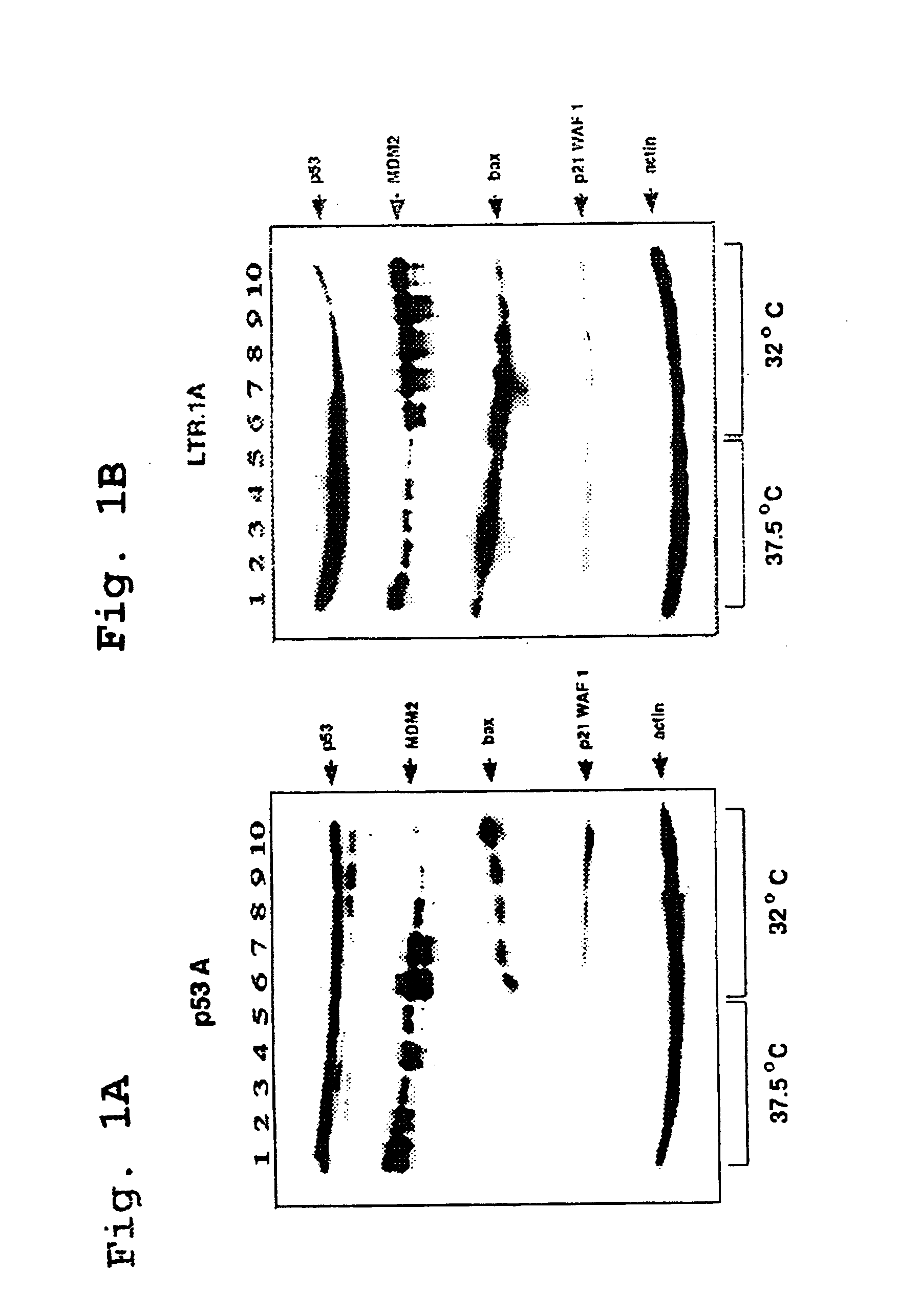Recombinant cell line and screening method for identifying agents which regulate apoptosis and tumor suppression
a technology of recombinant cell lines and screening methods, applied in the field of identification of antineoplastic agents, can solve problems such as reversal to nontumorigenic phenotype, persistent and sustained viral infection, and impaired development and degenerative diseases
- Summary
- Abstract
- Description
- Claims
- Application Information
AI Technical Summary
Benefits of technology
Problems solved by technology
Method used
Image
Examples
example i
mdm2 Expression Regulates p53-Dependent Apoptosis in BRK Cells
[0104]BRK cells were transformed by a temperature sensitive p53 (val135) mutant and either adenovirus E1A (p53A) or c-Myc (LTR.1A). As previously reported, both types of cell lines expressed the temperature sensitive p53 (val135) mutant in which p53 is in the wild-type conformation at the permissive temperature of 32° C. and in the mutant conformation at the nonpermissive temperature of 37.5° C. (Debbas and White 1993; Sakamuro et al. 1995). There are two striking differences between E1A+tsp53(val135) transformed (p53A) and myc+tsp53(val135) transformed (LTR.1A) cell lines. First, BRK cells expressing E1A undergo massive apoptosis at the permissive temperature (Chiou et al. 1994; Debbas and White 1993; Sabbatini et al. 1995) whereas the Myc expressing cells undergo a wave of apoptosis within the first 24 hours at the permissive temperature but are predominantly resistant to apoptosis (Sakamuro et al. 1995). Second, E1A ex...
example ii
[0120]As discussed previously, apoptosis is a genetically controlled process of cell suicide that plays a critical role in maintaining homeostasis and preventing disease. Disruption of apoptosis leads to impaired development, cancer, neurodegenerative and autoimmune diseases, and sustained viral infection. The regulation of apoptosis is a precarious balance between factors that promote survival and those responsible for initiating and executing cell death. One major advance toward the understanding of apoptosis regulation has been the characterization of the Bcl-2 family (White, E., 1996). This family consists of highly conserved proteins with opposing biological function. Anti-apoptotic Bcl-2 family members, such as Bcl-2 and Bcl-XL, inhibit apoptosis triggered by many circumstances, including TNF-α, Fas, UV radiation, chemotherapeutic drugs, and growth factor / hormone withdrawal. In contrast, pro-apoptotic Bcl-2 family members, such as Bax, Bak, and Nbk / Bik, induce cell death in nu...
PUM
| Property | Measurement | Unit |
|---|---|---|
| Temperature | aaaaa | aaaaa |
| Level | aaaaa | aaaaa |
Abstract
Description
Claims
Application Information
 Login to View More
Login to View More - R&D
- Intellectual Property
- Life Sciences
- Materials
- Tech Scout
- Unparalleled Data Quality
- Higher Quality Content
- 60% Fewer Hallucinations
Browse by: Latest US Patents, China's latest patents, Technical Efficacy Thesaurus, Application Domain, Technology Topic, Popular Technical Reports.
© 2025 PatSnap. All rights reserved.Legal|Privacy policy|Modern Slavery Act Transparency Statement|Sitemap|About US| Contact US: help@patsnap.com



